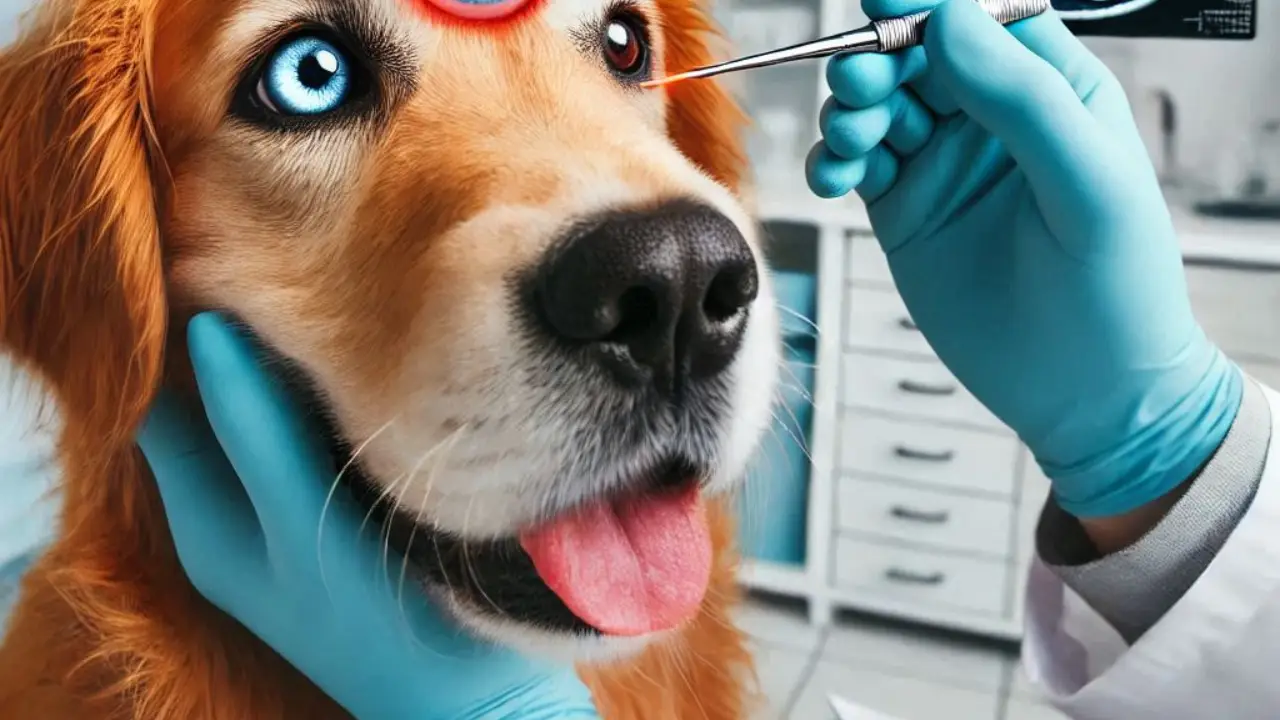Canine vestibular disease can be a frightening experience for dog owners. This condition affects a dog’s balance and coordination, often leading to alarming symptoms like dizziness, loss of balance, and even falling over. However, while it may look serious, canine vestibular disease is often treatable, and many dogs recover fully with proper care.
In this blog, we will explore everything you need to know about canine vestibular disease: what it is, how to recognize its symptoms, and the best treatment options available for your dog.
Contents
Canine Vestibular Disease
Canine vestibular disease, also known as “old dog vestibular syndrome” or “vestibular syndrome,” affects the vestibular system, which is responsible for controlling balance and eye movements. The vestibular system consists of parts of the inner ear and brain that help a dog maintain its balance and orientation.
There are two types of vestibular disease:
- Peripheral Vestibular Disease: The most common type, affecting the inner ear.
- Central Vestibular Disease: A less common and more serious form, affecting the brain.
Causes of Canine Vestibular Disease
The causes of canine vestibular disease can vary depending on whether the condition is peripheral or central. Below are some of the most common causes:
Peripheral Vestibular Disease Causes
- Ear infections: Bacterial or yeast infections in the inner or middle ear are one of the most common causes.
- Trauma: Injury to the head or neck can disrupt the vestibular system.
- Ototoxicity: Some medications, especially those used to treat ear infections, can damage the inner ear.
- Idiopathic: Often, no clear cause is identified, especially in older dogs, leading to the term “idiopathic vestibular syndrome.”
Central Vestibular Disease Causes
- Brain tumors: Abnormal growths in the brain can interfere with the vestibular system.
- Inflammatory diseases: Conditions like encephalitis or meningitis can lead to vestibular dysfunction.
- Strokes: Interruptions in the blood supply to the brain may affect the vestibular centers.
Symptoms of Canine Vestibular Disease
The symptoms of canine vestibular disease are often sudden and can be alarming to pet owners. Dogs with this condition may appear disoriented, and in severe cases, they may have trouble standing or walking.
Common Symptoms
- Head tilt: A noticeable tilt of the head, often to one side.
- Loss of balance: Dogs may stumble, fall, or seem dizzy.
- Nystagmus: Rapid, involuntary eye movements.
- Circling: The dog may walk in circles, typically toward the direction of the head tilt.
- Nausea or vomiting: Dogs may experience motion sickness due to dizziness.
When to See a Vet
If your dog is exhibiting any of the above symptoms, it’s important to consult a veterinarian as soon as possible. While canine vestibular disease often resolves on its own, some symptoms may indicate more serious underlying conditions like brain tumors or strokes.
Treatment Options for Canine Vestibular Disease
The treatment for canine vestibular disease largely depends on the underlying cause of the condition. In many cases, dogs with idiopathic vestibular disease recover within a few days to a few weeks without any specific treatment. However, other causes require more targeted interventions.
Supportive Care
For dogs with idiopathic or peripheral vestibular disease, supportive care is often the best approach:
- Anti-nausea medications: These can help manage nausea and vomiting caused by dizziness.
- Keeping your dog comfortable: Provide a quiet, calm environment for your dog to rest and recover.
- Assistance with mobility: Help your dog navigate stairs or uneven surfaces to prevent falls or further injury.
Treating Underlying Causes
If your dog’s vestibular disease is due to an ear infection, tumor, or another specific cause, your veterinarian may recommend the following treatments:
- Antibiotics or antifungal medications: These are prescribed if an ear infection is the cause.
- Surgery: In cases of tumors or severe inner ear damage, surgery may be necessary.
- Steroids or anti-inflammatory medications: These are used to reduce inflammation, especially in cases of encephalitis or other inflammatory conditions.
Recovery and Prognosis for Canine Vestibular Disease
The good news is that many dogs recover well from canine vestibular disease, particularly when the condition is idiopathic or related to an ear infection. Most dogs will show improvement within 48-72 hours, and full recovery is often seen within two to three weeks.
Long-Term Effects
While the majority of dogs recover fully, some may retain a mild head tilt or occasional balance issues. However, these are usually not severe enough to affect the dog’s quality of life.
Preventing Future Episodes
There is no guaranteed way to prevent canine vestibular disease, especially when the cause is idiopathic. However, regular vet check-ups and prompt treatment of ear infections can reduce the risk of recurrence.
Conclusion
Canine vestibular disease can be scary for both you and your dog, but in many cases, it is a temporary condition that resolves on its own. By recognizing the symptoms early and seeking veterinary care, you can help your dog recover as quickly as possible. Whether your dog needs supportive care or treatment for an underlying cause, the prognosis is often positive, allowing your furry friend to return to their happy, healthy self.

